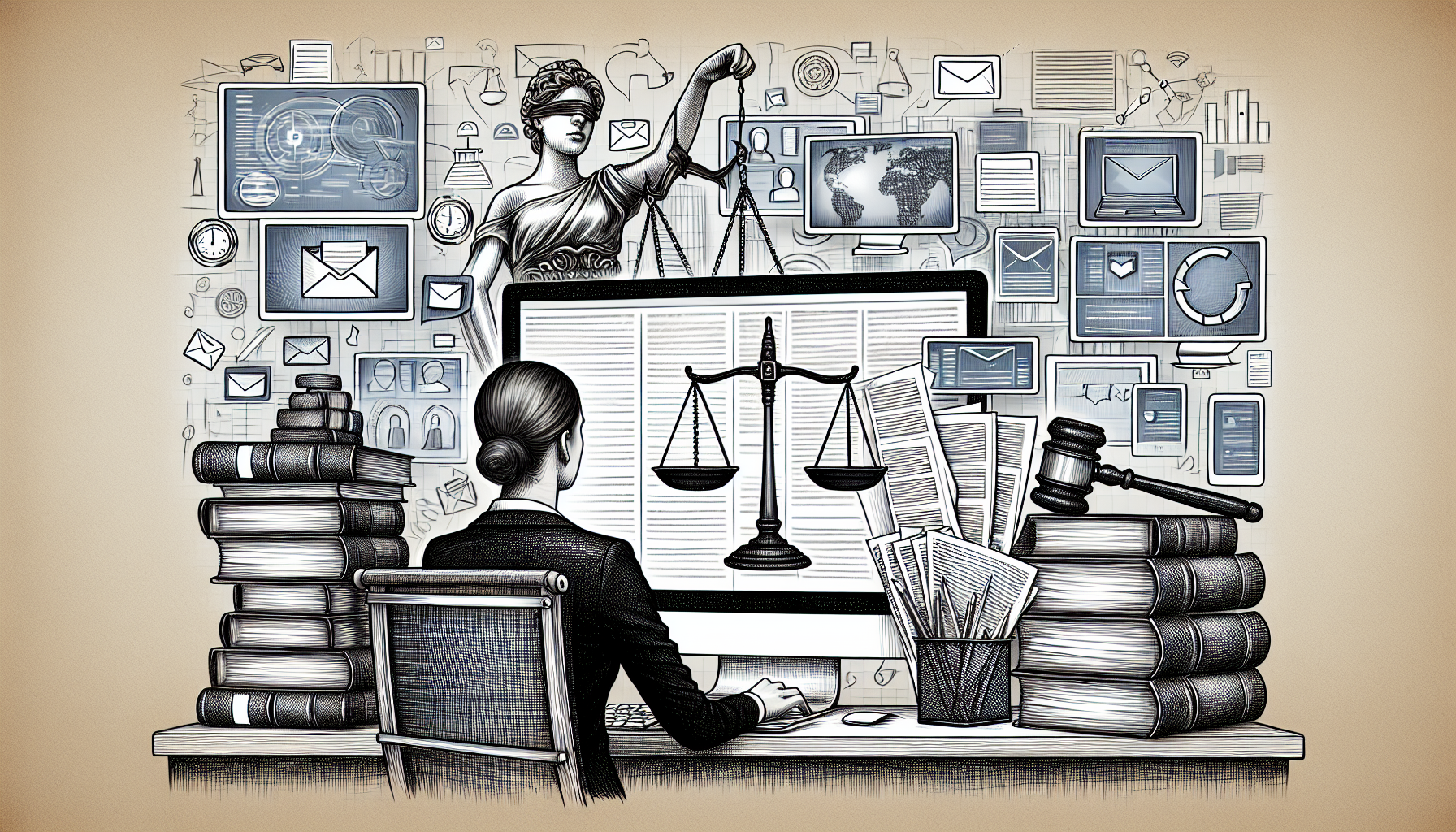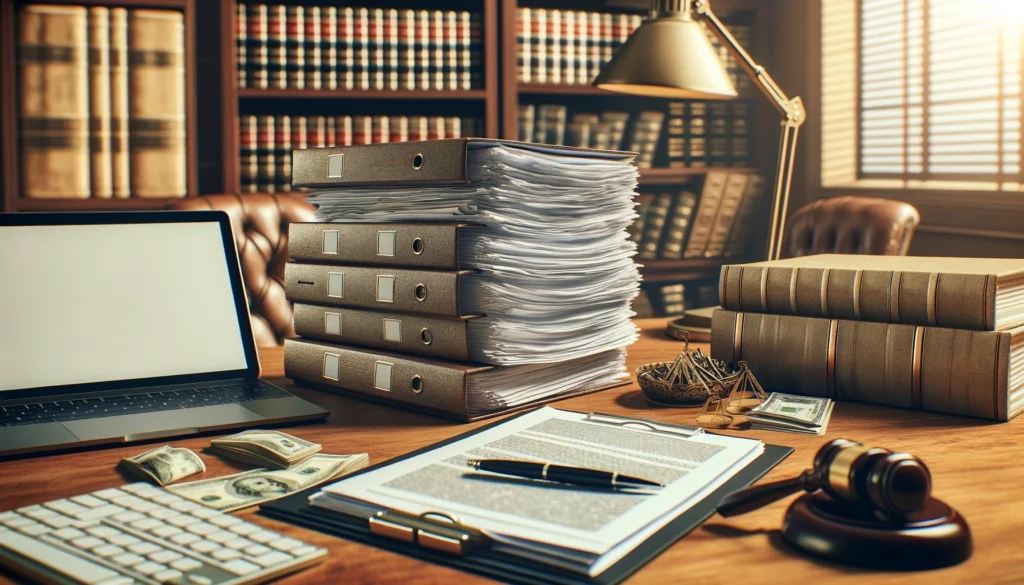
Opening Argument: The Evolution of Legal Correspondence
The art of drafting legal correspondence has long been a cornerstone of effective legal practice, yet often it is a time-consuming and labor-intensive task. Traditionally, creating precise, compelling letters, emails, and memos required seasoned expertise and significant attention to detail. However, the advent of Artificial Intelligence (AI) marks a profound shift in this landscape.
AI, particularly Large Language Models (LLMs) like ChatGPT, is transforming the way legal professionals approach their work. These tools promise to enhance efficiency, accuracy, and consistency, reshaping how we think about the process of legal correspondence. As we delve into the application of ChatGPT in personal injury cases, we discover the profound potential to propel legal work into a new era of innovation and productivity.
High-Speed Efficiency: The Role of AI in Modern Paralegal Workflows
The realm of personal injury law entails various tasks that are crucial yet often repetitive and time-consuming. From drafting initial correspondence to preparing comprehensive case summaries, the workload can be immense. This is where AI tools like ChatGPT can significantly improve efficiency.
By automating routine tasks, AI allows paralegals to allocate more time to high-priority tasks that require human judgment. For instance, ChatGPT can quickly draft initial demand letters, prepare detailed follow-up emails, and respond to common client inquiries, all while maintaining a high standard of quality. Such enhancements are pivotal in meeting tight deadlines and ensuring meticulous records, ultimately benefiting both legal professionals and their clients.
With efficiency as a foundational advantage, we can now explore the nuances of creating effective AI prompts to optimize these benefits further.
Also read:
Perfecting Prompts: Crafting Queries for Better Responses
The quality of AI-generated correspondence is heavily influenced by the prompt provided. Crafting well-defined, context-rich prompts is critical in obtaining the most relevant and coherent responses from ChatGPT.
Here are some essentials for writing effective prompts:
- Be Specific: The more precise your prompt, the more accurate the response. For instance, “Draft a demand letter for a car accident involving a rear-end collision in New York with medical bills amounting to $15,000 and lost wages of $5,000.”
- Context Matters: Include all relevant information to avoid ambiguity. Example: “Generate an email update for a client where their personal injury claim progress remains unchanged due to pending medical reports.”
- Iterative Refinement: Start with a basic prompt and refine it based on the initial output to get closer to the desired result. This involves tweaking and adding more details iteratively.
Constructing nuanced prompts not only assists in receiving precise answers but also ensures that the AI’s output aligns well with the demands of legal correspondence.
Next, we will delve into the key techniques for leveraging AI in drafting various forms of legal correspondence.
Also read:
The AI Advantage: Key Techniques for Drafting Correspondence
The applications of ChatGPT in drafting legal correspondence are vast. Here are a few critical techniques:
- Demand Letters: ChatGPT can create comprehensive demand letters by incorporating all pertinent case details. A well-crafted prompt example might be: “Generate a demand letter for a slip-and-fall case in a grocery store, describing the client’s injuries, incurred medical expenses, and a request for settlement.”
- Case Summaries: By inputting specific case details, ChatGPT can produce succinct and detailed summaries that help streamline case reviews. For instance: “Summarize a personal injury case where the client suffered a fractured wrist and incurred $12,000 in medical expenses due to a defective product injury.”
- Follow-up Emails: Automating follow-up communication enhances client satisfaction and keeps cases on track. Example prompt: “Create a follow-up email to a client, requesting additional medical documentation and providing them with a status update on their case.”
These examples highlight how ChatGPT can be an invaluable tool for paralegals and lawyers alike, ensuring precise, efficient, and professional correspondence.
Having highlighted the practical applications, we must now consider the importance of human oversight to ensure the accuracy of AI-generated content.
Also read:
Ensuring Accuracy: Combining Human Judgment with Machine Efficiency
Despite the advantages AI offers, it is paramount to combine machine efficiency with human judgment. AI-generated content should always be reviewed by experienced legal professionals to ensure accuracy, relevance, and adherence to legal standards.
Here are some techniques for verifying AI-generated content:
- Cross-Referencing: Verify facts, figures, and legal references against reliable sources and case files.
- Contextual Review: Ensure the AI’s output appropriately reflects the context and nuances of the case.
- Proofreading: Check for legal jargon, tone, and style consistency to maintain professionalism.
This balanced approach helps in leveraging AI’s speed and consistency while upholding the high standards expected in legal documentation.
As we navigate the integration of AI in legal workflows, ethical considerations, particularly around confidentiality, become increasingly crucial.
Also read:
Confidentiality and Ethics: Using AI Responsibly
Incorporating AI into legal practice necessitates a commitment to ethical standards and client confidentiality. Legal professionals must be diligent in protecting sensitive information and ensuring compliance with all relevant regulations.
Best practices for using AI include:
- Utilizing secure platforms that adhere to data protection standards.
- Regularly updating security protocols to safeguard against breaches.
- Ensuring transparency with clients about the use of AI in handling their cases.
Maintaining ethical standards not only upholds the integrity of the legal profession but also fosters trust between legal professionals and their clients.
Looking forward, the evolving landscape of AI in legal work presents opportunities for continual learning and adaptation.
Also read:
The Road Ahead: Future Prospects and Continuing Education
As AI continues to develop, so too will its applications in the legal field. Staying updated on emerging trends is essential for legal professionals to maximize the benefits of these technologies.
Investing in educational resources and training programs will ensure that lawyers and paralegals remain at the forefront of technological advancements, enabling them to provide superior legal services.
Finally, let’s recap the transformative impact of integrating AI into personal injury case workflows.
Also read:
Final Brief: Maximizing Efficiency with AI in Personal Injury Cases
The integration of AI tools like ChatGPT into personal injury case workflows offers substantial benefits in terms of efficiency, accuracy, and professionalism. By mastering effective prompt techniques, balancing AI with human oversight, and upholding ethical standards, legal professionals can revolutionize their practice.
Embracing these advancements empowers paralegals and lawyers to provide exceptional service, streamline operations, and focus more on critical thinking and strategy. The call to action is clear: integrate AI into your daily workflows to stay competitive and enhance the practice of law.


